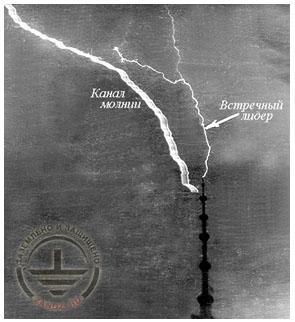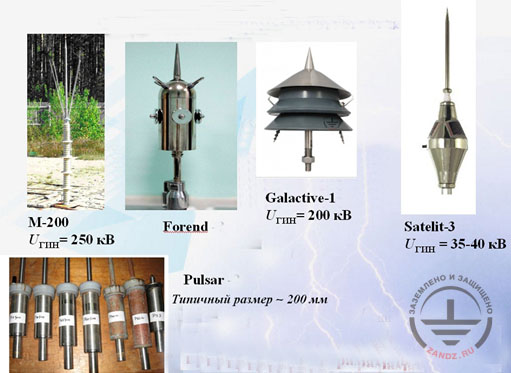Numerous versions of designs for active lightning protection have one similar property: the technical characteristics given by the manufacturer are extremely few and do not explain much. Especially it concerns the level of the protective ability of the device.
In the best case, sellers or manufacturers of active lightning detectors will be able to provide a certificate indicating that this design is able to withstand a pulsed current of a limiting amplitude from a lightning bolt. However, you are unlikely to be able to see the confirmation document, especially the data of the experimental testing of an active lightning rod testing for the nature of its protection and the area of its spread with the information about specific reliability.
Types of research on the efficiency of structures
For example, let's consider what parameters are indicated by the manufacturers of active lightning rods in order to register and certify construction on the territory of the French state. To do this, they need to enter information about the following types of tests:
- The test that proves there is no damage with a pulsed current of 10/350 μs with an amplitude of 100 kA.
- EMC research, if the design foresees electric blocks.
- Testing that the device will not be corroded when exposed to a sulphurous medium or salt fog.
- Testing for the existence of anticipation of the formation of a streamer flash.
How is the test experiment held
Of all these tests, only the last point more or less assesses the level of protection of an active lightning rod. The rest rather speak of its strength and durability. The test experiment is carried out in the following sequence: two lightning conductors, longer than 2 meters in length, are placed in the plane-plane gap. At the same time, one of them is typical (it is taken as a standard), the other is an active lightning rod, which is to be tested. Between them, there is a permanent electric field (from 20 to 25 kW), after what a high voltage pulse is applied (250/2500 μs).
During the tests, the moments of the start of the counter-discharge branches from the upper peaks of the lightning rods are registered. If the start time from the active electrode is fixed ahead of the order of 10 μs, such active lightning protection is considered suitable for use. But here there is a double interpretation of the results of the experiment:
- There is no exact certainty that with such testing, the streamer flash is fixed, but not a viable counter leader. During the test optical registration is not taken into account. In addition, the definition of the moment of the start of the counter discharge occurs on the applied voltage pulse front deformation. Such an approach doesn't correspond to modern test criteria.
- Let us note that quite often in practice a counter leader does not arise from the start of the streamer flash. For this to happen, there must be a certain contribution in its stem.
- If a counter leader was born, it might be not viable. It may stop to develop in the layer of volumetric discharge of the corona. Lightning won't be intercepted. This is confirmed in laboratory studies, and in practical examples.

Figure 1. Counter leader on the Ostankino television tower*
Lack of scale
Another important drawback of such testing is the discrepancy between the scale of the model experienced and the practical original. In this regard, the assertion about the efficiency of the device can be misleading. In relation of an active lightning rod, it is the most important because when modeling, the value of electrodes and the discharge interval becomes smaller and it happens at a regular tank accumulation inside the pulse source, which does not change. Again, the potential energy contribution to the development of a counter charge depends on it.

Figure 2. Types of active lightning rods*
* - illustrations are taken from the article of prof. E.M. Bazelyan "Are active lightning rods active?"
See also:
- A series of articles about lightning protection for beginners
- How does lightning originate? Learn from the unique video
- Lecture on "Lightning and Lightning Protection in the Power Engineering Institute to the name of G.M. Krzhizhanovsky"
Related Articles:
 Lightning protection of residential and public buildings - answers to frequently asked questions in the design
Lightning protection of residential and public buildings - answers to frequently asked questions in the design
 Lightning Protection of Large Territories: Parks, Grounds, Plant Territories. Page 1
Lightning Protection of Large Territories: Parks, Grounds, Plant Territories. Page 1
 Lightning Protection of Large Territories: Parks, Grounds, Plant Territories. Page 2
Lightning Protection of Large Territories: Parks, Grounds, Plant Territories. Page 2
 Lightning Protection of Large Territories: Parks, Grounds, Plant Territories. Page 3
Lightning Protection of Large Territories: Parks, Grounds, Plant Territories. Page 3

